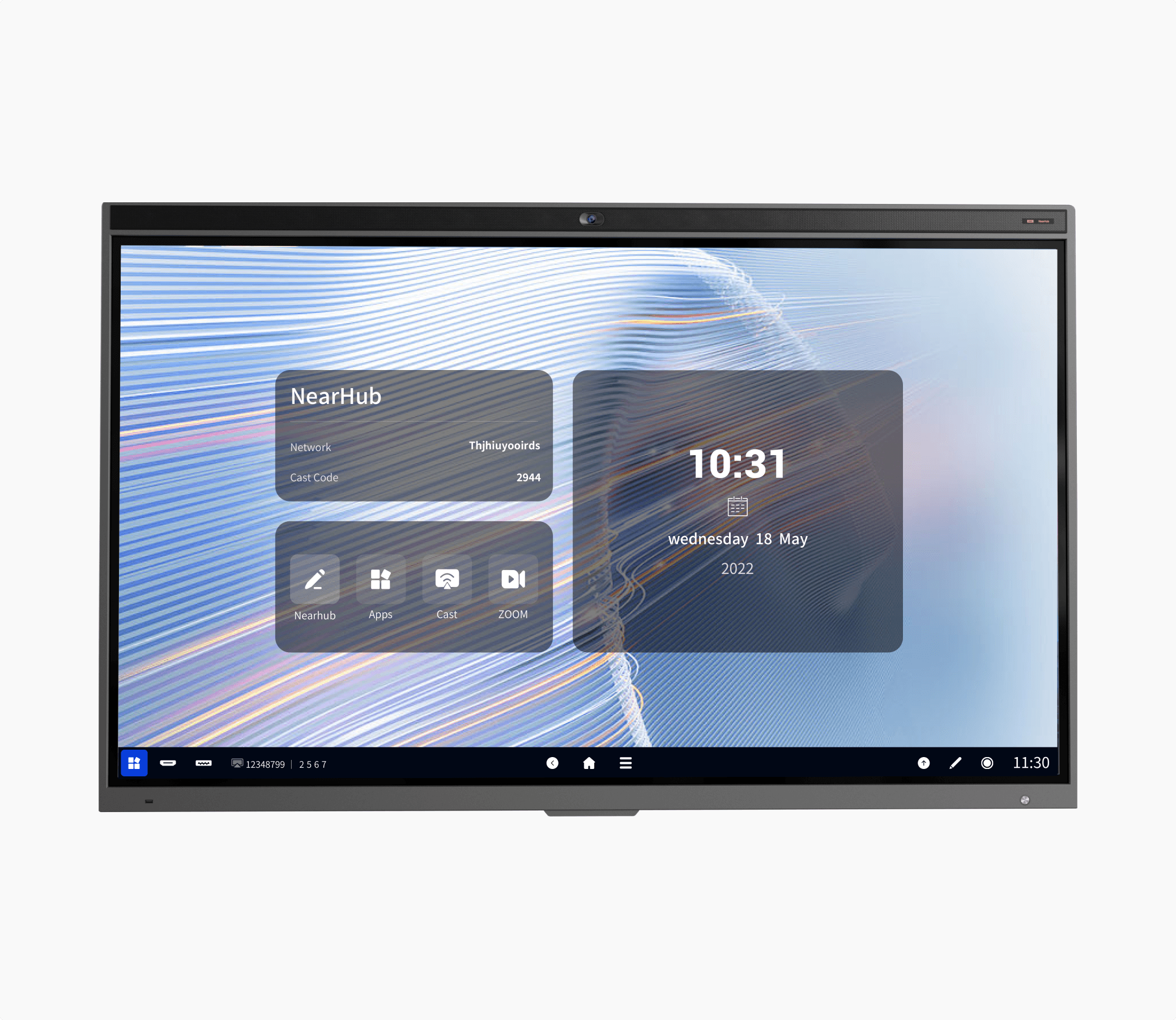As education becomes increasingly digital, many schools are investing in touch screen TVs to enhance classroom learning. But how much does a touch screen TV for school cost? This article provides a detailed price breakdown, from 55-inch to 75-inch models, along with factors influencing costs, installation expenses, and software considerations. We also highlight the benefits of interactive displays, including improved student engagement, collaborative learning, and hybrid education support. Whether you're looking for a large touch screen TV or a budget-friendly option, this guide will help you make an informed decision.
Is a Touch Screen TV Worth It for Schools?
If you're a school administrator, teacher, or decision-maker, you might be wondering whether a touch screen TV for classrooms is a smart investment. The question often arises: Are they worth the cost? The short answer is—yes! But let's explore why.
Touch screen TVs, often referred to as interactive flat panels (IFPs) or smartboards, are revolutionizing the way students learn. They encourage collaboration, enhance engagement, and improve information retention by making lessons more interactive. Plus, with the rise of hybrid and remote learning, having a digital display with touchscreen capabilities is more relevant than ever.
But how much does a touch screen TV for school use actually cost? And what factors influence the pricing? Let’s break it down so you can make the most informed decision for your school’s budget and educational needs.
The Role of Touch Screen TVs in Modern Classrooms
Touch screen TVs are transforming the educational experience. Here are some of the key functions they provide in classrooms:

- Interactive Lessons: Teachers can use digital whiteboards to illustrate concepts, annotate presentations, and engage students in real-time.
- Collaborative Learning: Students can work together on projects, brainstorming activities, and problem-solving exercises using multi-touch features.
- Video Conferencing & Remote Learning: With built-in webcams and microphones, students can attend virtual lessons and collaborate with peers worldwide.
- Gamified Learning: Many educational apps offer interactive quizzes, puzzles, and challenges that make learning more engaging.
- Instant Access to Online Resources: Teachers can pull up videos, articles, and simulations directly from the internet to enrich lessons.
- Handwriting Recognition & Note-Taking: Digital whiteboard software allows students to write on the screen, converting their notes into digital text.
- STEM & Coding Integration: Some smartboards support coding lessons, allowing students to experiment with programming in an interactive way.
- Digital Assessments: Teachers can administer quizzes and polls in real time, collecting immediate feedback from students.
- Screen Sharing & Casting: Students and teachers can cast their devices onto the screen, making presentations seamless.
Why Schools Should Invest in a Touch Screen TV
Purchasing a touch screen TV for your school comes with a host of benefits:
- Enhanced Student Engagement – Interactive technology keeps students actively involved, making lessons more fun and memorable.
- Increased Collaboration – Students can work together on projects, fostering teamwork and problem-solving skills.
- Supports Different Learning Styles – Whether students are visual, auditory, or kinesthetic learners, touch screen TVs cater to all.
- Long-Term Cost Savings – Unlike projectors that require frequent bulb replacements, interactive screens have lower maintenance costs.
- Future-Proof Learning – As education becomes more digital, investing in technology ensures your school stays ahead.
- Remote & Hybrid Learning Capabilities – With built-in video conferencing tools, lessons can continue no matter where students are.
- Reduces Paper Waste – Schools can cut down on printed worksheets and textbooks by shifting to digital resources.
Understanding the Cost of a Touch Screen TV for Schools
Touch screen TVs vary widely in price depending on size, features, and brand. Generally, you can expect the cost to fall within the following ranges:
| Size | Estimated Price Range |
|---|---|
| 55-inch | $1,500 - $3,500 |
| 65-inch | $2,500 - $5,000 |
| 75-inch | $3,500 - $7,000 |
| 86-inch | $5,000 - $10,000+ |
How Much Is a Touch Screen TV at School?
1. Budget-Friendly 55-Inch Touch Screen TVs for Schools
A touch screen TV 55 inch is a great entry-level option for classrooms that need basic interactive functionality without breaking the bank. Expect to pay between $1,500 and $3,500, depending on the brand and features.

💡 Explore: Smartboard Price for 55-inch Models
2. Mid-Range 65-Inch Touch Screen TVs: Ideal for Most Classrooms
A large touch screen TV around 65 inches is one of the most popular choices for schools. It provides enough screen space for interactive lessons, group projects, and video conferencing while staying within a reasonable budget. Prices generally range from $2,500 to $5,000.

💡 Explore: Webcam Whiteboard for Interactive Learning
3. Premium 75-Inch Touch Screen TVs: Best for Large Classrooms
A 75-inch touch screen TV is perfect for larger classrooms, auditoriums, or collaborative spaces where multiple students need to interact with the screen at the same time. Prices range from $3,500 to $7,000.
- Pros: Exceptional clarity and viewing experience, great for big groups
- Cons: Higher cost, may require more space for installation

💡 Explore: 75 Smart Board for Ultimate Collaboration
Additional Benefits of Touch Screen TVs in Classrooms
- Increases Student Engagement: Interactive lessons keep students involved, reducing distractions and enhancing learning.
- Supports Remote Learning: Many touch screen TVs now come with built-in webcams for video conferencing, making them ideal for hybrid and virtual classrooms.
- Reduces Long-Term Costs: Unlike projectors, which require frequent lamp replacements, touch screens are more durable and cost-effective over time.
- Enhanced Learning Experience: Multi-touch displays allow for collaborative learning, interactive quizzes, and digital whiteboarding.
- Encourages Student Participation: Touch screen TVs make learning more dynamic by allowing students to interact with digital content.
- Better Accessibility: Features like screen magnification, text-to-speech, and handwriting recognition help students with different learning needs participate more effectively.
How to Choose the Right Touch Screen TV for Your School
With so many options available, choosing the right touch screen TV for classrooms can be overwhelming. Here’s a step-by-step approach:
- Determine the Size You Need:
- Small classrooms (under 20 students): A 55-inch touch screen TV is sufficient.
- Mid-sized classrooms: A 65-inch touch screen TV is ideal.
- Large lecture halls or libraries: A 75-inch touch screen TV is better.
- Assess Software Needs:
- Basic Needs: If you only require a digital whiteboard, a basic model with touch capabilities is enough.
- Advanced Features: If you need video conferencing, cloud integration, and lesson planning software, opt for a higher-end model.
- Consider Connectivity Requirements:
- HDMI, USB, Bluetooth, and wireless casting options
- Compatibility with Windows, macOS, and Chromebooks
- Check for Durability & Warranty:
- Choose models with at least a 3-year warranty.
- Check if the touch screen has an anti-glare and scratch-resistant display.

Final Recommendation
Investing in a touch screen TV for classrooms makes learning more engaging and interactive. While the initial cost may seem high, the long-term benefits far outweigh the expense.
If your school is ready to make the switch, check out these excellent options:
✅ 55-inch Smartboard Price
✅ 65-inch Webcam Whiteboard
✅ 75-inch Smart Board for Large Classrooms
✅ Whiteboard Canvas for Digital Collaboration
Investing in technology today means a brighter future for students tomorrow. 🚀











































